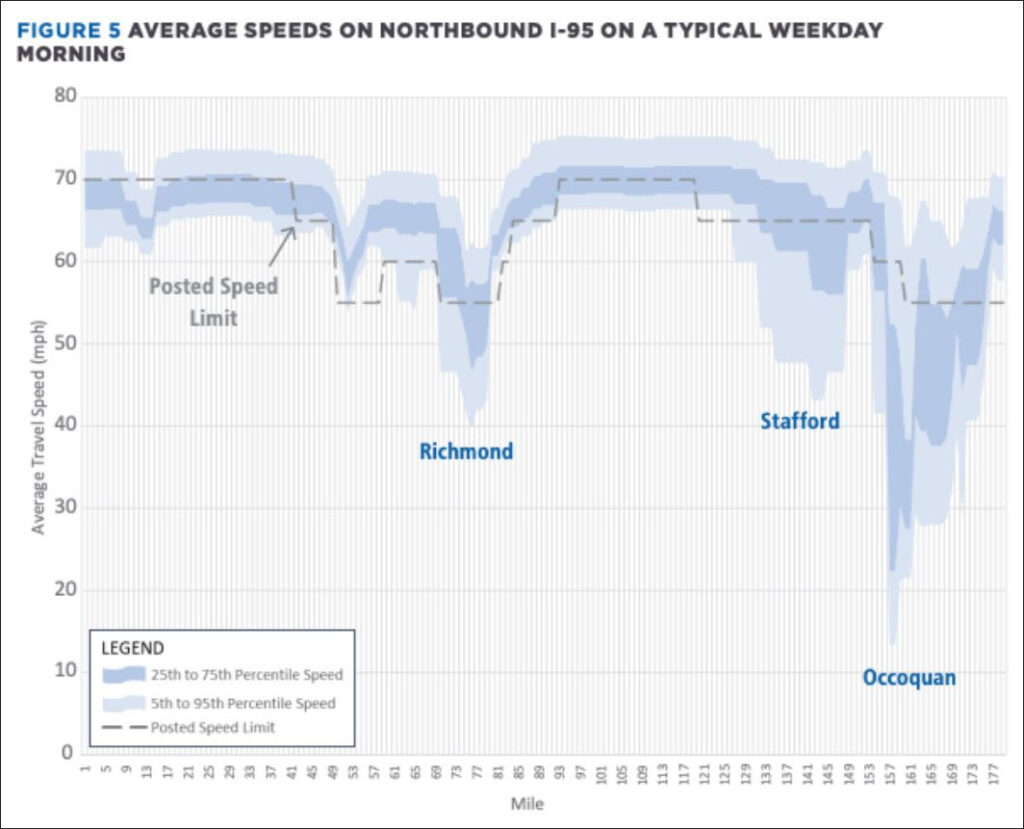
The Virginia Department of Transportation (VDOT) is getting more sophisticated in how it analyzes and presents data. The chart above comes from a VDOT study looking at average northbound speeds on Interstate 95 to determine where to focus traffic-relief efforts, according to Inside NoVa. The department will develop a similar study for the Interstate 64 corridor this summer. (I’ll get to specific VDOT proposals in a later post. Right now, I’m just grooving on the cool data presentation.)
From the chart we can readily see three areas where traffic gets crunched: Richmond, Stafford/Fredericksburg, and Northern Virginia — with the most nightmarish slowdowns occurring around Occoquan. It may not tell us anything we don’t already know, but it does measure the congestion more precisely and help pinpoint the bottlenecks that need to be addressed.
— JAB

Leave a Reply
You must be logged in to post a comment.